
Leyland Motors Limited was a British vehicle manufacturer of lorries, buses and trolleybuses. The company diversified into car manufacturing with its acquisitions of Triumph and Rover in 1960 and 1967, respectively. It gave its name to the British Leyland Motor Corporation, formed when it merged with British Motor Holdings in 1968, to become British Leyland after being nationalised. British Leyland later changed its name to simply BL, then in 1986 to Rover Group.
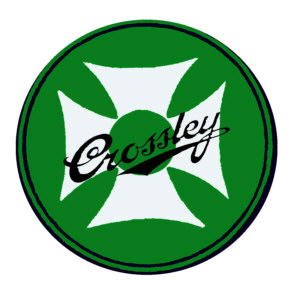
Crossley Motors was an English motor vehicle manufacturer based in Manchester, England. It produced approximately 19,000 cars from 1904 until 1938, 5,500 buses from 1926 until 1958, and 21,000 goods and military vehicles from 1914 to 1945.

Associated Equipment Company (AEC) was a British vehicle manufacturer that built buses, motorcoaches and trucks from 1912 until 1979. The name Associated Equipment Company was hardly ever used; instead, it traded under the AEC and ACLO brands. During World War One, AEC was the most prolific British lorry manufacturer, after building London's buses before the war.
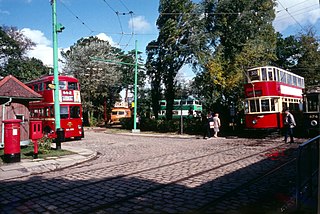
The East Anglia Transport Museum is an open-air transport museum, with numerous historic public transport vehicles. It is located in Carlton Colville a suburb of Lowestoft, Suffolk. It is the only museum in the country where visitors can ride on buses, trams and trolleybuses, as well as a narrow-gauge railway.
British United Traction (BUT) was a manufacturer of railway equipment and trolleybuses. It was established in 1946 as a joint venture between AEC and Leyland.

Guy Motors was a Wolverhampton-based vehicle manufacturer that produced cars, lorries, buses and trolleybuses. The company was founded by Sydney S. Guy (1885–1971) who was born in Kings Heath, Birmingham. Guy Motors operated out of its Fallings Park factory from 1914 to 1982, playing an important role in the development of the British motor industry.

Charles H Roe was a Yorkshire coachbuilding company. It was for most of its life based at Crossgates Carriage Works, in Leeds.
The Mexborough and Swinton Traction Company was the name adopted by the Mexborough & Swinton Tramways Company in 1929 following the introduction of trolleybuses on all its routes. It operated in the West Riding of Yorkshire, England, over routes serving Manvers Main Colliery, Wath upon Dearne and the towns of Rotherham, Rawmarsh, Swinton, Mexborough, Conisbrough and the estate at Conanby.

The Maudslay Motor Company was a British vehicle maker based in Coventry. It was founded in 1901 and continued until 1948 when it was taken over by the Associated Equipment Company (AEC) and along with Crossley Motors the new group was renamed Associated Commercial Vehicles (ACV) Ltd.

Trolleybuses served the London Passenger Transport Area from 1931 until 1962. For much of its existence, the London system was the largest in the world. It peaked at 68 routes, with a maximum fleet of 1,811 trolleybuses.
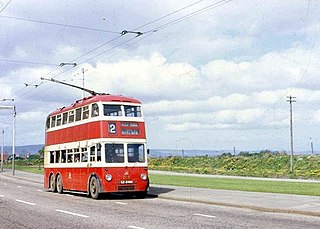
The Belfast trolleybus system served the city of Belfast, Northern Ireland. It was the only trolleybus system built in Ireland. Opened on 28 March 1938, it gradually replaced the city’s tramway network.
Interserve Rail is a British engineering and facilities management company. Founded in 1910, it is a subsidiary of Interserve.
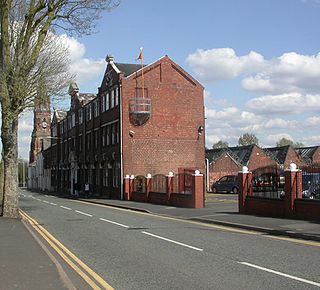
Sunbeam Commercial Vehicles was a commercial vehicle manufacturing offshoot of the Wolverhampton based Sunbeam Motor Car Company when it was a subsidiary of S T D Motors Limited. Sunbeam had always made ambulances on modified Sunbeam car chassis. S T D Motors chose to enter the large commercial vehicle market in the late 1920s, and once established they made petrol and diesel buses and electrically powered trolleybuses and milk floats. Commercial Vehicles became a separate department of Sunbeam in 1931.

The AEC 661T was a two-axle double deck trolleybus chassis manufactured by AEC between 1931 and 1942. Based on the AEC Regent bus chassis, 330 were built for United Kingdom operators. Bodywork on early models was similar to that on the AEC Regent motor bus, but a full-fronted version was used from 1934.
The AEC 662T was a two-axle single deck trolleybus chassis manufactured by AEC between 1931 and 1935. A single deck version of the AEC 661T, 21 were built for English operators in Darlington (11) and Nottinghamshire and Derbyshire (10), but most were intended for export.
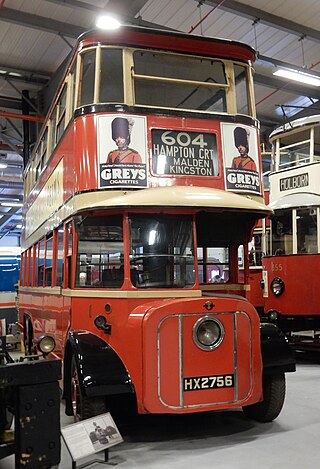
The AEC 663T was a three-axle double deck trolleybus chassis manufactured by AEC between 1931 and 1937. Based on the AEC Renown three axle bus chassis, three demonstrators were bodied by English Electric in 1930. Eighty-three were built for English operators including 60 for London United Tramways.
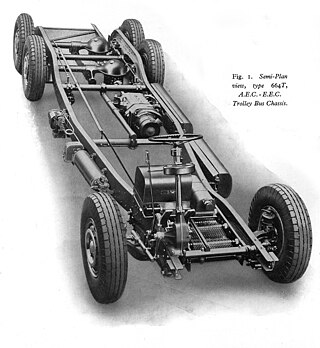
The AEC 664T was a 18 ft. 7 5/16 in. wheelbase three-axle double deck trolleybus chassis manufactured by AEC between 1933 and 1942 and designated for installation of up to 74 passengers' rear- or central-entrance 30 ft. (length) x 7 ft. 6 in. (width) body. Based on the AEC Renown bus chassis, 796 were built for British operators including 660 for the London Passenger Transport Board for whom it was primarily developed.
The AEC 691T was a one-off experimental three-axle double deck trolleybus chassis manufactured by AEC. In 1932, the Underground Electric Railways Company of London commissioned AEC to build an extended version of the AEC 663T.

The AEC 761T was a two-axle double deck trolleybus chassis manufactured by AEC. Based on the AEC Q-type bus chassis, only five were built; a demonstrator that was later purchased by Bradford, one in Southend-on-Sea and three exported to Sydney, Australia.
The BUT 9641T was a three-axle double deck trolleybus chassis manufactured by British United Traction between 1947 and 1956. A total of 498 were manufactured for eight operators in England at Leyland's Ham, AEC's Southall and Crossley Motors' Stockport factories.













